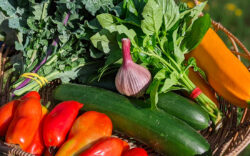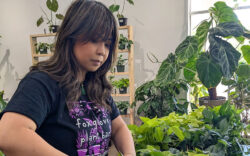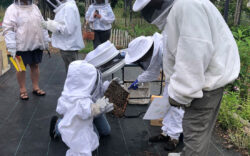April 20, 2022
Any experienced gardener can wax eloquently about their favorite tools—but ask three people, and you’ll likely get four answers. Your garden’s size and growing techniques and plants also affect what tools work best. Techniques and plant selection matter, too. Gardening veggies in no-till rows will need a different set of tools than a vertical garden of strawberries against a sunny fence. With those caveats in place, here’s the tools I’ve found useful in small, medium and large gardens.
Essentials
- Hand trowel: It plants. It weeds. It harvests. It’s an all-around star. Great for gardens of any size. Don’t pick the cheapest version, but you don’t need to get the most expensive version, either. Normally the handle breaks, so if you want a tool with some sticking power, find one that looks like the handle will stay put.
- Gloves: OK, I’m not a lady who cares about soft hands—I’m proud of the calluses I’ve earned. That being said, gardening in Georgia clay means you’ll have to deal with fire ants, and those boogers hurt. So do blisters. Save your hands where you can, and get some gloves. Cheap is fine here.
- Watering can with a diffuser: Choose something you can pick up when it’s full. Try to find something with a diffuser, not just a spout. There are many beautiful watering cans with long elegant designs, but spouts without a diffuser can damage tender plants and seedlings. Diffusers slow the water down and mimic gentle rain. Find a diffuser you can take off and clean. I bought one where the diffuser didn’t come off the spout and spent what felt like many frustrating hours trying to clear tiny debris blocking the spout.
- Harvest basket: Look for a bag or box with handles you can easily carry and clean. I have a collection of favorite harvest buckets that I’ve picked up from the thrift store for about $2 altogether. Even for a small garden, it’s nice to have a harvest basket to collect all your produce together. With everything in one spot, those veggies and herbs have a better chance of making it into your kitchen and into your meals.
- Sunscreen, bug spray and hat: These tools will help you stay outside more often. Especially in Georgia. Once, I thought I only needed these things if I was “really working” in the garden, i.e., spending more than 15 minutes outside. Taking the time to use sunscreen and bug spray and plop on a hat means you won’t be chased in before you’re ready to go.
- Stakes, trellis, cages: Indeterminate tomatoes and cucumbers need to get off the ground to avoid disease, and peppers can use some support if they’re growing too large. If you’re growing ornamentals, it’s fun to grow them vertically. Get creative! I’ve used bamboo poles, broken shovel handles, sticks, chicken wire, cattle panels, old fencing, twine, nets and rope. Some worked better than others. Generally speaking, the sturdier a structure, the better it will work.
- String, twine or tape: It’ll tie your plant to your chosen structure. Don’t tie your knots tightly; that can gird your plant and damage it. I use jute twine for small jobs like tying top-heavy pepper plants to stakes. I also use (and reuse) plastic twine for more intensive jobs, like holding the 5-foot tomato plants in place. Some gardeners use gardening tape. I’ve used it, but prefer twine.
Step-up Gardening Tools
- Shovel: Spend the extra money on something that will last for a long time. Breaking a shovel handle feels awful, and I find it hard to repair. Shovels move dirt and compost, break up fire ant mounds and chop weeds.
- Hose: Cheap hoses will make you swear. At least, they make me swear. Cheap hoses puncture easily, tangle into giant knots and slough off plastic bits. Patching a cheap hose is possible, but man, is it a pain—better to spend the money on a good hose. I like the kink-free garden hoses, though they are not kink-free. They last forever and survive scooting across rusty metal fences, heavy truck traffic and grass growing over them.
- Hose diffuser: Please do not water your plants by blasting them with the hose turned all the way up and no diffuser. No one wants a gallon of water pumping over their face, including thirsty plants. I’ve seen a few people water this way, and it makes me wince. Pick a diffuser that’s easy to clean. It will last longer.
- Garden clippers: The best clippers have a spring between the two handles. You’ll only have to squeeze the handle to snip, then, they’ll spring back open without aid. You can get by with scissors, but clippers make trimming easier on the hand. Some of the best models can be disassembled, sharpened and re-assembled.
Big Project Gardening Tools
- Stirrup hoe: This is a great way to whack weeds without bending over. Use when the weeds are small. Anything taller than a few inches will be too big.
- Irrigation system: Whether you pick a soaker hose, drip irrigation or sprinkler system, an irrigation system can raise your gardening game by leaps and bounds. I started with a cheap soaker hose and it makes a world of difference for keeping up with watering needs in the summer.
Like what you just read? Support Flagpole by making a donation today. Every dollar you give helps fund our ongoing mission to provide Athens with quality, independent journalism.










